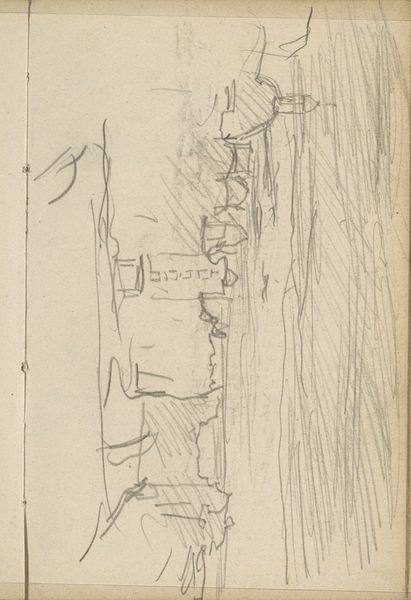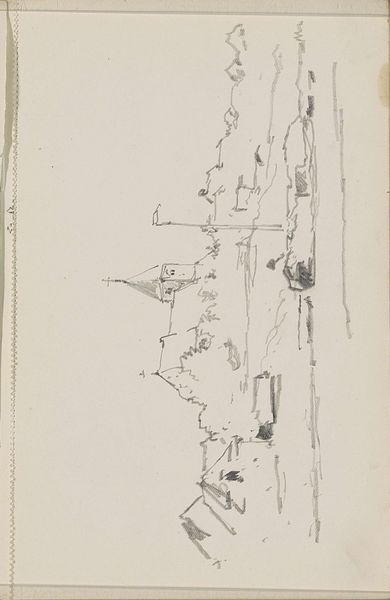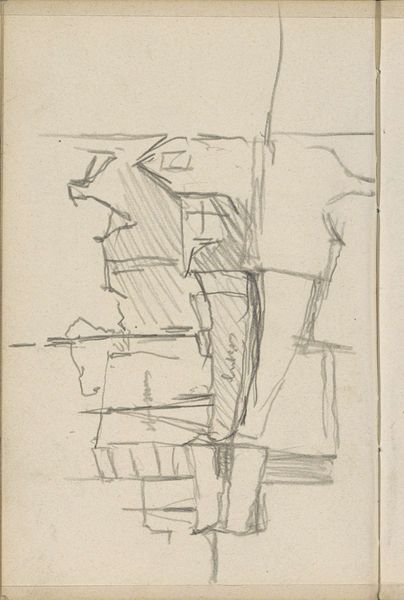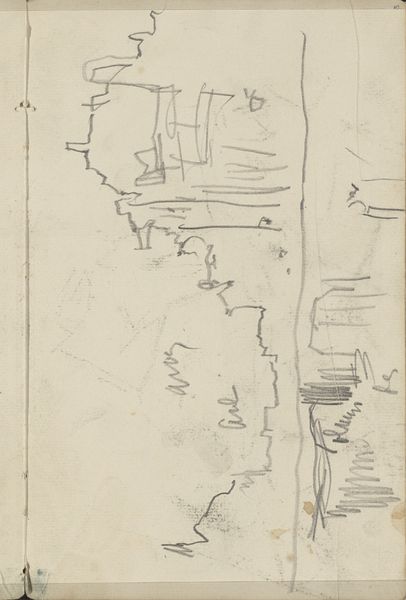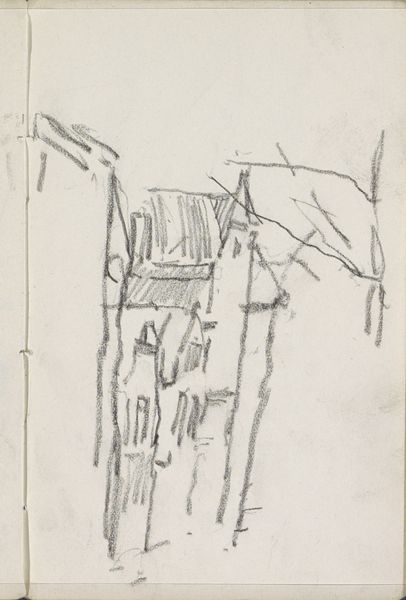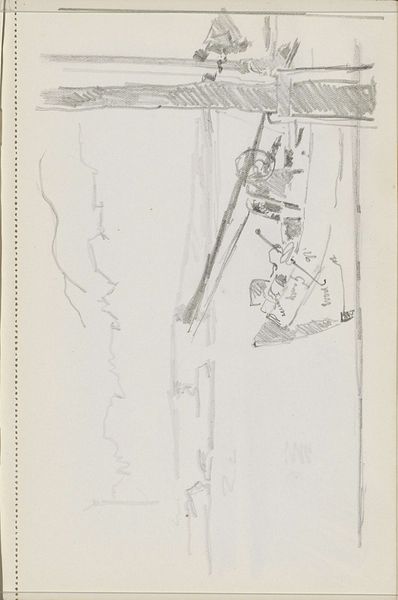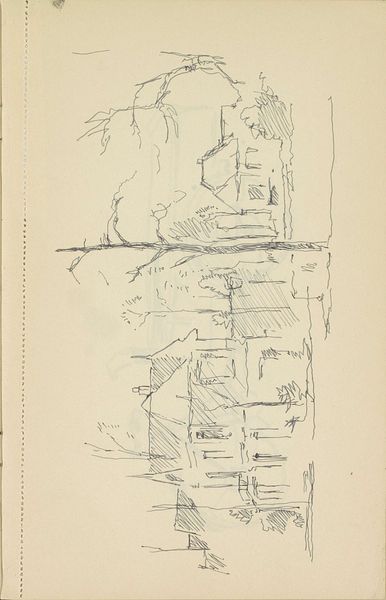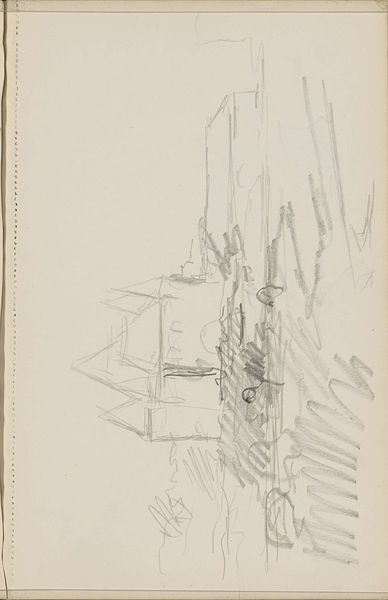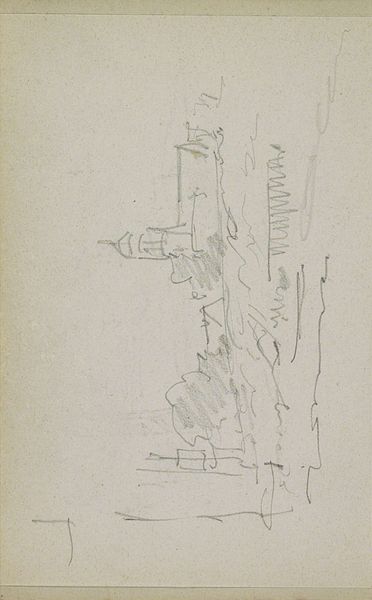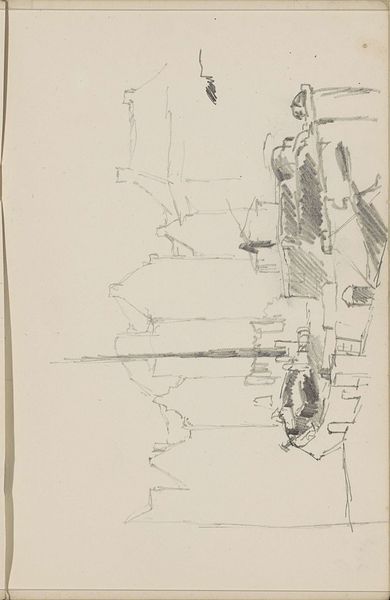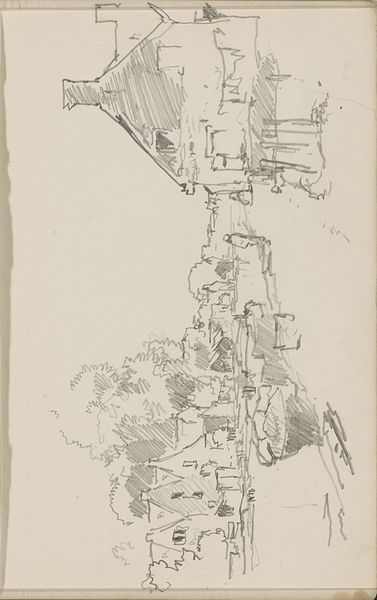
Copyright: Rijks Museum: Open Domain
Curator: This pencil drawing, entitled "Overdekte kramen op een straat," which translates to "Covered Stalls on a Street," comes to us from Cornelis Vreedenburgh, created sometime between 1890 and 1946. Editor: The sketch appears unfinished, almost ghostly, like a memory fading away on paper. The lines are incredibly sparse, just enough to suggest forms. Curator: The simplicity in material underscores its creation. Vreedenburgh is using the humble pencil, something easily sourced and transportable. I wonder where he made this sketch; was it a preliminary drawing for a larger work? Did the affordability and availability of paper shape the image of cityscapes during this period? Editor: From a formalist perspective, notice the way the vertical lines of the stalls create a visual rhythm across the composition. It’s about structure. Look at the upper-right edge: the variation and thickness add subtle complexity and direct your eye across the surface, yet everything is understated. What does that communicate? Curator: Perhaps the sketch points to a deeper trend? Rapid industrialization shifted how people made a living; many flooded urban centres, taking work in manufacturies or selling in market stalls. Was Vreedenburgh engaging in some documentary realism? What purpose did the paper fulfil—a cheap medium to create value as fast as the sellers at market? Editor: That’s interesting, but observe the artist’s specific handling. Notice that ambiguous round form at the very top? It acts as a focal point, drawing the eye upwards, away from the earthiness and practicalities of the street vendors themselves, providing the scene with balance. Curator: The lack of heavy shading suggests transience: maybe Vreedenburgh observed social interactions. It hints at both the impermanence and bustle of urban commerce and artistic production, suggesting the street and the paper shared a specific function. The economy in pencil strokes and marks communicates how easily overlooked are those street vendors within that economic framework. Editor: These faint lines certainly capture something intangible—evanescent cityscapes that communicate not about specific elements but capture an airy formal whole. Curator: Well put. The marketplace and drawing now each invite considerations of resource circulation, inviting questions around economics.
Comments
No comments
Be the first to comment and join the conversation on the ultimate creative platform.
